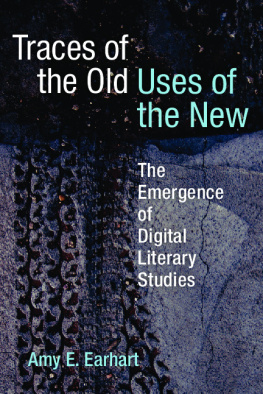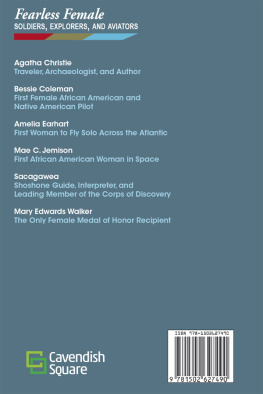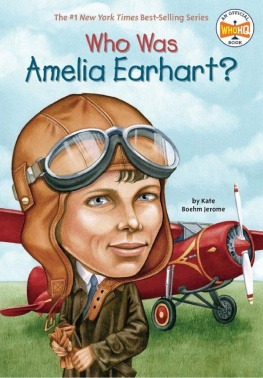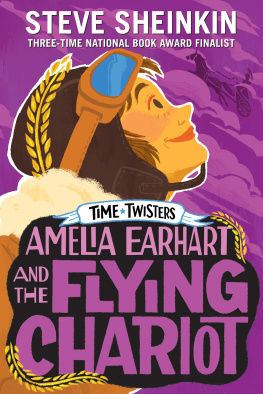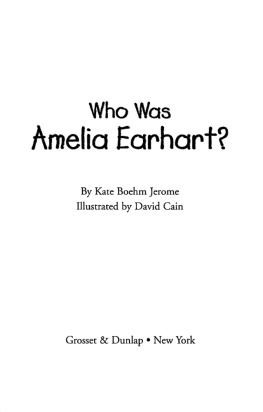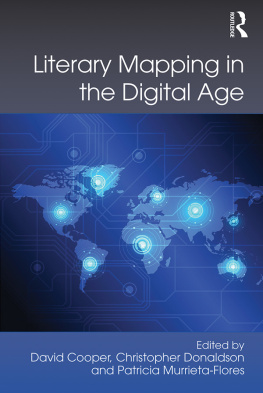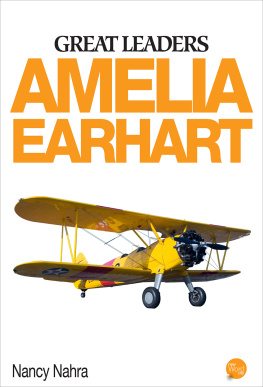Amy E. Earhart - Traces of the Old, Uses of the New: The Emergence of Digital Literary Studies
Here you can read online Amy E. Earhart - Traces of the Old, Uses of the New: The Emergence of Digital Literary Studies full text of the book (entire story) in english for free. Download pdf and epub, get meaning, cover and reviews about this ebook. year: 2018, publisher: University of Michigan, genre: Politics. Description of the work, (preface) as well as reviews are available. Best literature library LitArk.com created for fans of good reading and offers a wide selection of genres:
Romance novel
Science fiction
Adventure
Detective
Science
History
Home and family
Prose
Art
Politics
Computer
Non-fiction
Religion
Business
Children
Humor
Choose a favorite category and find really read worthwhile books. Enjoy immersion in the world of imagination, feel the emotions of the characters or learn something new for yourself, make an fascinating discovery.
- Book:Traces of the Old, Uses of the New: The Emergence of Digital Literary Studies
- Author:
- Publisher:University of Michigan
- Genre:
- Year:2018
- Rating:4 / 5
- Favourites:Add to favourites
- Your mark:
- 80
- 1
- 2
- 3
- 4
- 5
Traces of the Old, Uses of the New: The Emergence of Digital Literary Studies: summary, description and annotation
We offer to read an annotation, description, summary or preface (depends on what the author of the book "Traces of the Old, Uses of the New: The Emergence of Digital Literary Studies" wrote himself). If you haven't found the necessary information about the book — write in the comments, we will try to find it.
Amy E. Earhart: author's other books
Who wrote Traces of the Old, Uses of the New: The Emergence of Digital Literary Studies? Find out the surname, the name of the author of the book and a list of all author's works by series.
Traces of the Old, Uses of the New: The Emergence of Digital Literary Studies — read online for free the complete book (whole text) full work
Below is the text of the book, divided by pages. System saving the place of the last page read, allows you to conveniently read the book "Traces of the Old, Uses of the New: The Emergence of Digital Literary Studies" online for free, without having to search again every time where you left off. Put a bookmark, and you can go to the page where you finished reading at any time.
Font size:
Interval:
Bookmark:
 Page i
Page i 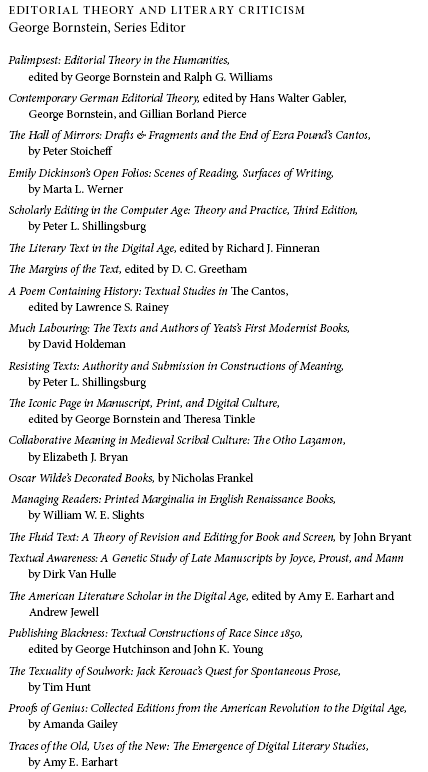 Page ii Page iii
Page ii Page iii Amy E. Earhart
University of Michigan Press
Ann Arbor
Copyright Amy E. Earhart 2015
Some rights reserved

This work is licensed under the Creative Commons Attribution-Noncommercial-No Derivative Works 3.0 United States License. To view a copy of this license, visit http://creativecommons.org/licenses/by-nc-nd/3.0/ or send a letter to Creative Commons, 171 Second Street, Suite 300, San Francisco, California, 94105, USA.
Published in the United States of America by the
University of Michigan Press
Manufactured in the United States of America
2018 2017 2016 2015 4 3 2 1
A CIP catalog record for this book is available from the British Library.
DOI: http://dx.doi.org/10.3998/etlc.13455322.0001.001
ISBN 978-0-472-07278-1 (hardcover : alk. paper)
ISBN 978-0-472-05278-3 (cloth : alk. paper)
ISBN 978-0-472-12131-1 (e-book)
For my family. You are what matters.
Page vi Page viiWithout Jerome (Jerry) McGann and NINES, I would never have become a digital humanist. I was toiling as a lecturer when I was accepted to attend the very first NINES digital workshop in 2005. There I met a group of scholars who inspired me to delve into what was (and is still, unfortunately) a very risky area of scholarly inquiry, digital humanities. Jerry McGann, Bethany Nowviskie, Nick Laiacona, Dana Wheeles, Melissa White, and others involved with University of Virginias digital renaissance would continue to provide inspiration and support. The workshop participants were equally important to my interest in digital humanities: Stephanie Browner, Gavin Budge, Dennis Denisoff, Neil Fraistat, Susan Garfinkel, David Hanson, Jurretta Jordan Heckscher, Lorraine Janzen, Steven E. Jones, Tim Killick, David Latan, Laura Mandell, James Mussell, Suzanne Paylor, Julia Thomas, and Edward Whitley. I am also fortunate to have had the opportunity to work with Kenneth Price, who has become an invaluable mentor. A professor at Texas A&M University when I was a graduate student, Ken continued to offer suggestions and help as he changed jobs and eventually built a digital humanities powerhouse at the University of Nebraska. Each of these scholars and many, many generous digital humanities scholars around the globe have offered suggestions and encouragement throughout my career and during this project. I have been fortunate to work within a community to which I truly felt I belonged.
I am indebted to the Program to Enhance Scholarly and Creative Activities; the Initiative for Digital Humanities, Media, and Culture (IDHMC), formerly the Digital Humanities Program; and The Melbern G. Glasscock Center for Humanities Research, all at Texas A&M University, for supporting my book. A special thank you to my department heads during this project, Jimmie Killingsworth, Paul Parish, and Nancy Warren, and to my department who decided to hire a digital humanist. Im sure they are still wondering why they agreed to such a crazy thing. Others who were invaluable to this project and to my sanity include my long-standing colleague and friend Maura Ives, my coconspirator in much of the digital humanities work at Texas A&M University and a great lunch buddy; Jim Harner, an academic mentor, scholarly inspiration, and my go-to source for restaurant recommendations; and our new director of the IDHMC, Laura Mandell. My readers offered very useful suggestions for revision, and the editors at the University of Michigan Press, Tom Dwyer, Aaron McCollough, and Christopher Dreyer, provided invaluable help throughout the process.
My greatest thanks goes to my family, without whom none of this would have been possible. My mother, Marianne Earhart Banks, and my late father, J Ronald Earhart, who always told me that I could. Thank you especially to my husband, Bruce Herbert, who always asks the difficult question, who always knows that I am able, and who agreed to move to a ranch and start a sheep flock. Im thinking about chickens and guinea hens now, okay? To my daughter, who never thought it was strange when her mother was madly typing on the computer during her swim practices, who occasionally missed meets for work related trips, and who is still proud of her Momma for writing a book (even though she is a teenager).
Page ixIt was also interesting to see, during the convention and after, a debate among the Twitter crowd about the label digital humanities and whether it was accurate or useful and how to get humanists, digital and otherwise, to talk more (or more usefully) to one another. A catchall phrase comes in handyits hard to imagine the NEHs establishing an Office of Cool Scholarship Done With Digital Toolsbut it doesnt do justice to the very different kinds of work done under that label. Maybe the term is just a placeholder, and the day is not far off when people wont feel the need to make a distinction between the humanities and the digital humanities.
Jennifer Howard, The MLA Convention in Translation, The Chronicle of Higher Education, December 31, 2009
Scholars who self define as digital humanists joke that any public discussion on digital humanities will inevitably turn to the question: What are the digital humanities? Digital humanists spend what seems to be an inordinate amount of time discussing, defining, and explaining what, in many ways, is an amorphous, fluid area of study. Books, articles, blog posts, tweets, conferences, and conference papers that define digital humanities have grown exponentially, Page 2 and so common is the query that Matthew Kirschenbaum has called such what is essays genre pieces. In Hockeys analysis, scholars saw the web as a space devoid of serious activity and unable to support scholarship, but she also, and perhaps more importantly, predicts the fissures in humanities computing that would explode in contemporary conflict. Instead of ensuring a cohesive humanities computing community, who shared a good deal of agreement Page 3 on technique and methodology, the web spurred a new set of users who exploited the webs flexibility and openness to diversify scholarly questions and methodologies, often viewed as a direct assault on scholarly rigor and exclusiveness.
By the mid-2000s, humanities computing was declining as a term of choice, with Willard McCartys Humanities Computing, published in 2005, signaling the last substantive use of the term.
This book is written as the digital humanities become increasingly visible, with articles about dh appearing in the Chronicle of Higher Education, increasing numbers of jobs posted in the MLA job list, and a growing number of dh centers across the United States. Yet at disciplinary conferences, college and university meetings, in social media, and in trade publications, such as Inside Higher Ed, the what is dh question continues to be voiced. This monograph does not seek to provide one definition of digital humanities. Instead, the project suggests that digital humanities Page 4 is, in many ways, a living term, ever evolving, ever shifting in response to particular pressures of scholarship, the academy, and the individual. Accordingly, the project traces the various theoretical and methodological branches of literary digital humanities to reveal how seemingly unrelated literary movements have shaped current digital humanities practice. Many of the early books on digital humanities have focused on the breadth of the digital humanities, arguing that digital humanities is an inclusive form that is able to be all to all fields. While such a tactic serves the political purpose of making digital humanities indispensable, it obscures the impact of practitioners from various disciplinary backgrounds who have shaped technology to address their scholarly investigations. This book responds to the need for a coherent and focused analysis of the impact of discipline on the emergence of digital literary studies. I hope that this approach leaves the way open for others to think through digital practices in related areas such as game studies, new media studies, postcolonial studies, history, architecture, information studies, computer science, language studies, and archaeology.
Next pageFont size:
Interval:
Bookmark:
Similar books «Traces of the Old, Uses of the New: The Emergence of Digital Literary Studies»
Look at similar books to Traces of the Old, Uses of the New: The Emergence of Digital Literary Studies. We have selected literature similar in name and meaning in the hope of providing readers with more options to find new, interesting, not yet read works.
Discussion, reviews of the book Traces of the Old, Uses of the New: The Emergence of Digital Literary Studies and just readers' own opinions. Leave your comments, write what you think about the work, its meaning or the main characters. Specify what exactly you liked and what you didn't like, and why you think so.

